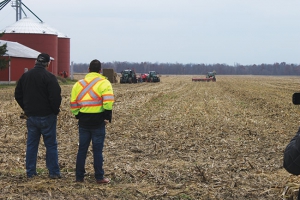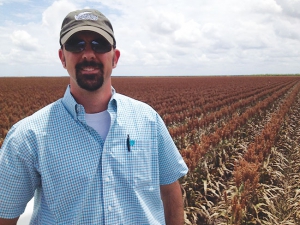| |
| |
 |
| |
 |
|
MMMM d, yyyy |
|
| |
The provincial and federal governments are supporting Ontario farmers and continuing to combat climate change by boosting energy efficiency on farming operations.
» Read more...
The European Chemical Agency has concluded that glyphosate should not be classified as a substance causing cancer. This will potentially pave the way for glyphosate’s license renewal in the European Union.
» Read more...
Stanford University scientists have now confirmed the increased efficiency of grass stomata and gained insight into how they develop. Their findings, reported in Science, could help us cultivate crops that can thrive in a changing climate.
» Read more...
|
| |
 |
 |
| |
|
| |

With a unique Group 14 mode of action, Authority is tough on weeds and gentle on your crop for higher yields and cleaner fields. That's why Authority's active ingredient, sulfentrazone, is the number one pre-emergent residual broadleaf weed control in US soybean crops.
>> Learn More |
| |
|
| |
 Figuring out precisely how much nitrogen fertilizer farmers should apply to grain corn is tricky business. For starters, nitrate – the form of nitrogen (N) in the soil that is readily available to plants – is highly mobile and susceptible to being leached away by rainfall. Therefore, the spring soil nitrate test that’s standard in Western Canada is not always useful in Eastern Canada, where rainfall tends to be heavier.
» Read more...
Figuring out precisely how much nitrogen fertilizer farmers should apply to grain corn is tricky business. For starters, nitrate – the form of nitrogen (N) in the soil that is readily available to plants – is highly mobile and susceptible to being leached away by rainfall. Therefore, the spring soil nitrate test that’s standard in Western Canada is not always useful in Eastern Canada, where rainfall tends to be heavier.
» Read more... |
| |
 Glyphosate-resistant (GR) waterhemp was first found in Ontario in 2014, but it already has a foothold in three counties in the southwest of the province. Waterhemp is very good at developing herbicide resistance. In the U.S., researchers have found waterhemp biotypes with resistance to one or more of Groups 2, 4, 5, 9, 14 and 27.
» Read more...
Glyphosate-resistant (GR) waterhemp was first found in Ontario in 2014, but it already has a foothold in three counties in the southwest of the province. Waterhemp is very good at developing herbicide resistance. In the U.S., researchers have found waterhemp biotypes with resistance to one or more of Groups 2, 4, 5, 9, 14 and 27.
» Read more... |
| |
 |
 |
| |
|
| |
|
|
| |
| |








